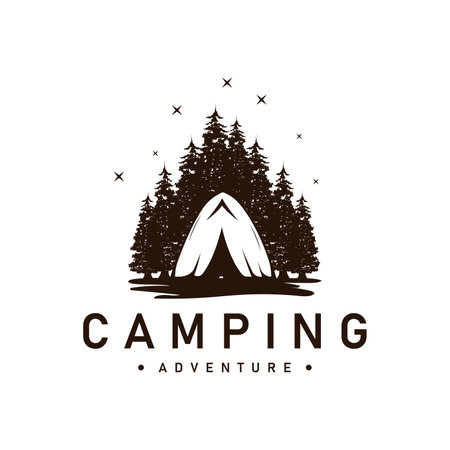Gear Up: Essential Tools for Campfire BBQ
If you want to cook smoky, fall-off-the-bone ribs out in the wilderness, having the right gear is just as important as your recipe. Whether youre setting up near a lake, deep in the forest, or at a mountain campsite, these essential tools will help you master campfire BBQ like a pro.
🔥 Portable Cooking Options
You need a solid cooking surface that works well over open flames. Here are two of the most popular choices:
| Cooking Gear | Description | Best For |
|---|---|---|
| Portable Grill | Compact and easy to set up with adjustable grates for heat control. | Even cooking over charcoal or wood chunks. |
| Fire Pit with Grill Grate | Open fire experience with built-in grill top or removable grate. | Traditional campfire flavor and ambiance. |
🛠️ Must-Have BBQ Tools
Once your fire is going, these tools will help you handle ribs safely and effectively:
- Heavy-Duty Tongs: Long-handled tongs let you flip and move ribs without burning your hands.
- Basting Brush: Keep your ribs juicy by brushing on sauce throughout the cook.
- Heat-Resistant Gloves: Protects your hands when handling hot grill grates or foil packs.
- Meat Thermometer: Ensures your ribs reach that perfect internal temp (around 190–203°F for fall-off-the-bone).
🥩 Wrapping & Serving Essentials
No campfire rib session is complete without proper wrapping and cleanup gear. Heres what to pack:
| Item | Why You Need It |
|---|---|
| Aluminum Foil | Wrap ribs for slow-cooking or resting; keeps juices locked in. |
| Cutting Board & Knife | Slicing and serving made easy once ribs are done. |
| Cooler with Ice Packs | Keeps raw meat fresh before it hits the grill. |
| Parchment Paper or Towels | Makes cleanup quick and keeps your workspace tidy. |
📦 Pro Tip: Pack Smart!
Create a “Campfire Rib Kit” in a sturdy plastic bin so all your BBQ essentials are ready to grab-and-go. Label everything and do a quick check before heading out—because nothing ruins rib night like forgetting the foil!
2. Choosing the Right Ribs and Marinade
If you want smoky, fall-off-the-bone ribs while camping, it all starts with picking the right cut and giving it that signature BBQ flavor. Whether youre out in the woods or grilling at a lakeside camp, good prep makes all the difference.
Picking the Perfect Ribs
There are two main types of pork ribs youll find at most grocery stores or butcher shops in the U.S., and both can work great over a campfire:
| Rib Type | Description | Best For |
|---|---|---|
| Baby Back Ribs | Smaller, leaner, and more tender; come from the upper part of the ribcage near the spine. | Quick cooks or when packing light for shorter trips. |
| Spare Ribs | Bigger, meatier, with more fat and flavor; come from the belly area. | Longer slow-cooks over a steady campfire for deep smoky flavor. |
Freshness Matters
Look for ribs with bright pink meat and a good amount of marbling (that’s little streaks of fat). Avoid packages with lots of liquid or an off smell — fresh is key when you’re far from a fridge!
Marinade vs. Dry Rub: Which Ones Better?
You can go either way depending on your taste and how much time you have before heading out to camp:
| Prep Method | Flavor Profile | Prep Time | Camp-Friendly? |
|---|---|---|---|
| Marinade | Savory, juicy, sometimes tangy or sweet depending on ingredients. | 4–24 hours (prep at home before your trip). | If prepped ahead in a zip-top bag, yes! |
| Dry Rub | Bolder crust with strong spices like paprika, garlic powder, brown sugar. | 10 minutes to apply (can sit overnight too). | Super easy — no liquid needed! |
Pro Tip:
If youre short on cooler space, go with a dry rub. You can mix your own blend at home and store it in a small jar or resealable bag.
Simple Camp-Ready Dry Rub Recipe
- 2 tbsp brown sugar
- 1 tbsp paprika (smoked if possible)
- 1 tsp garlic powder
- 1 tsp onion powder
- 1/2 tsp black pepper
- 1/2 tsp salt
- (Optional) A pinch of cayenne for heat
Toss this rub onto your ribs before wrapping them up for transport. By the time you hit the campsite, theyll be seasoned and ready for fire-grilling magic.
Next Up:
The fire’s crackling — it’s time to get cooking! In the next section, we’ll talk about building the perfect campfire setup for low-and-slow BBQ ribs.

3. Building the Perfect Campfire for Low and Slow Cooking
If you want those smoky, fall-off-the-bone ribs in the wild, it all starts with the right fire. Unlike quick campfire meals, BBQ ribs need a steady, low heat and lots of smoke — just like a backyard smoker but out in nature. Heres how to master the art of building the perfect campfire for low and slow cooking.
Choosing the Right Wood
Not all wood is created equal when it comes to BBQ. For that signature smoky flavor, go with hardwoods that burn slowly and give off great aroma. Avoid softwoods like pine or spruce—they burn too fast and can release harmful resins.
| Wood Type | Flavor Profile | Burn Time |
|---|---|---|
| Hickory | Strong, bacon-like flavor | Long |
| Oak | Medium smoky flavor, versatile | Very Long |
| Apple | Slightly sweet, fruity smoke | Moderate |
| Cherry | Mild, slightly sweet smoke | Moderate |
The Fire Setup: Two-Zone Cooking
This technique lets you control heat more precisely, just like a smoker would. One side of your fire pit will have direct heat (the fire), while the other will be cooler—perfect for slow-cooking ribs.
Step-by-Step Setup:
- Create a fire bed: Start your campfire on one side of your fire ring or pit using kindling and hardwood logs.
- Add coals: Once you have a good flame going, let it burn down to hot embers. You’ll use these for consistent heat.
- Designate zones: Move most of the coals to one side (direct zone) and leave the other side with minimal or no coals (indirect zone).
- Add smoking wood: Place chunks of soaked hardwood over the coals to produce steady smoke without flaring up.
- Place your grill grate: Set a sturdy grate over both zones so you can move your ribs as needed.
Tending the Fire Over Time
Your campfire will need some babysitting. Keep an eye on temperature by hovering your hand about six inches above the grill grate:
| Heat Level | Hand Test Duration | Description |
|---|---|---|
| Low Heat (225–250°F) | 6–8 seconds | Perfect for low and slow rib cooking |
| Medium Heat (300–350°F) | 4–5 seconds | A bit too hot for ribs—adjust by moving coals or raising the grate |
Pro Tip:
Add fresh wood chunks every hour to maintain smoke levels without overheating. If things get too hot, sprinkle water around—not directly on—the fire to cool it down gradually.
The Key to Success: Patience + Consistency
The magic behind fall-off-the-bone ribs is time. Keeping your fire low and steady is more important than high flames or speed. Think of this as wilderness slow cooking at its best—simple ingredients, natural smoke, and a little bit of love from the fire.
Your fire is now ready—next up: prepping those ribs!
4. Campfire Rib Cooking Techniques
Cooking ribs over a campfire might sound intimidating, but with the right steps and a little patience, you can get that smoky, fall-off-the-bone goodness even in the middle of the wilderness. Heres how to master your rib game over open flames.
Step 1: Wrap Your Ribs Right
After seasoning or marinating your ribs, its time to wrap them. Use heavy-duty aluminum foil—it holds up better over high heat and locks in moisture.
Foil Wrapping Tips:
- Double wrap: This prevents any juices from leaking out.
- Add moisture: Before sealing, pour in a splash of apple juice, beer, or your favorite BBQ sauce for extra flavor and tenderness.
- Tight seal: Crimp the edges well so steam stays trapped inside.
Step 2: Set Up Your Campfire for Indirect Heat
You don’t want to place your wrapped ribs directly over roaring flames. Instead, aim for indirect heat by pushing hot coals to one side of your fire pit or creating a two-zone setup with a grill grate.
Campfire Heat Zones Table
| Zone | Heat Level | Purpose |
|---|---|---|
| Direct Heat | High | Searing or caramelizing at end |
| Indirect Heat | Low to Medium | Main cooking area for slow roasting ribs |
Step 3: Slow Cook and Rotate Regularly
Place your foil-wrapped ribs in the indirect heat zone. Let them cook slowly—this usually takes about 2 to 3 hours depending on thickness and temperature. Every 30–45 minutes, rotate the packets to ensure even cooking.
Rotation Tips:
- Use tongs or heat-resistant gloves: Safety first!
- Flip and turn: Flip top-to-bottom and rotate left-to-right every time you check.
- Avoid frequent opening: Keep that foil sealed unless checking doneness near the end.
Step 4: Finish Over Direct Heat (Optional)
If you like a bit of char or want that sticky BBQ glaze, unwrap the ribs during the last 10-15 minutes and place them over direct heat. Brush on your favorite sauce and let it caramelize—but keep an eye out to avoid burning.
Sauce Caramelizing Guide:
| Sauce Type | Sugar Content | Caution Level Over Flame |
|---|---|---|
| Kansas City Style (Sweet) | High | High – watch closely! |
| Carolina Vinegar-Based | Low | Low – more flame-friendly |
| Tennessee Whiskey Glaze | Medium-High | Medium – monitor caramelization closely |
Nailing these techniques will have everyone around your campfire licking their fingers and asking for seconds. Just remember—low and slow wins the rib race!
5. Serving It Up: Classic Sides and Sauces
Once your smoky campfire ribs are fall-off-the-bone tender, it’s time to complete the meal with some classic American BBQ sides. These traditional dishes not only complement the rich, smoky flavor of the ribs but also bring that familiar backyard cookout vibe to your wilderness setting.
Crowd-Pleasing Campfire Sides
You don’t need a full kitchen to whip up these favorites—just a few ingredients and some creative use of your campfire or portable grill.
| Side Dish | Description | Camp-Friendly Tip |
|---|---|---|
| Cornbread | Sweet and crumbly, perfect for soaking up BBQ sauce. | Use a cast iron skillet over the fire or bake in foil packets. |
| Baked Beans | Rich, savory beans with a hint of sweetness and smoke. | Heat canned baked beans directly over the fire or add bacon and onions for extra flavor. |
| Coleslaw | Cool and crunchy, a refreshing contrast to hot ribs. | Prep at home and keep chilled in a cooler until serving time. |
DIY Barbecue Sauces
If you want to take your campfire BBQ to the next level, try mixing up your own sauce. Homemade sauces let you control the flavor and can be customized to fit your taste. Here are a few easy ideas:
1. Classic Sweet & Tangy Sauce
- Main Ingredients: Ketchup, apple cider vinegar, brown sugar, Worcestershire sauce
- Flavor: Balanced sweet and tangy with a little zip
- Tip: Mix at home and store in a squeeze bottle for easy serving
2. Spicy Chipotle Sauce
- Main Ingredients: Chipotle peppers in adobo, honey, garlic, tomato paste
- Flavor: Smoky heat with a sweet finish
- Tip: Blend before your trip and keep refrigerated until use
3. Carolina Mustard Sauce
- Main Ingredients: Yellow mustard, vinegar, sugar, black pepper
- Flavor: Sharp and tangy with a mustard kick
- Tip: Great for pork ribs—store in mason jars for easy packing
Sauce on the Side or Slathered On?
This one’s all personal preference. Some folks like their ribs dry-rubbed with sauce on the side; others love that sticky-sweet glaze right on top. If youre glazing over the fire, brush on your sauce during the last few minutes of cooking so it caramelizes without burning.
The Full Plate Experience
A perfectly grilled rib served alongside warm cornbread, smoky baked beans, and crisp coleslaw is what campfire dreams are made of. With these classic sides and DIY sauces, youre bringing real-deal BBQ flavor straight to the backwoods.

